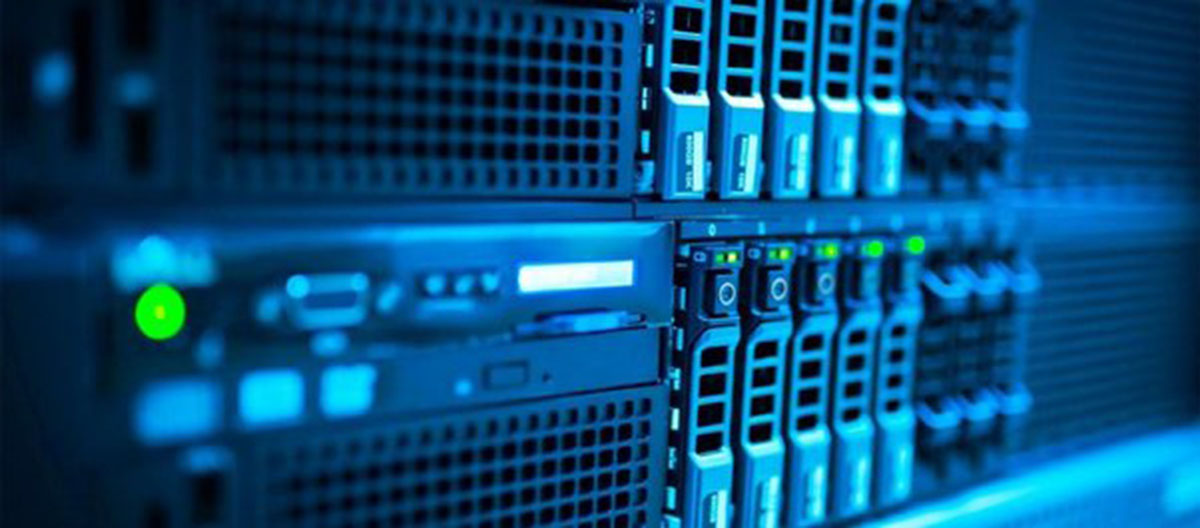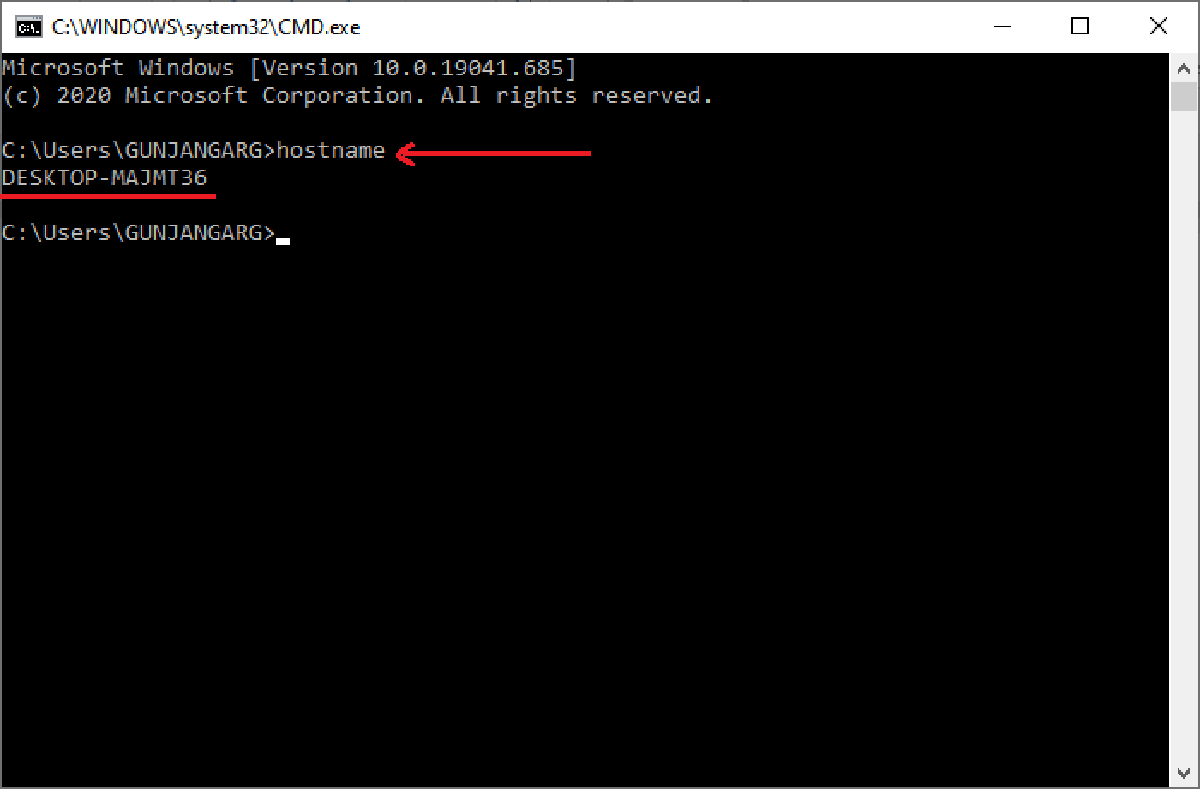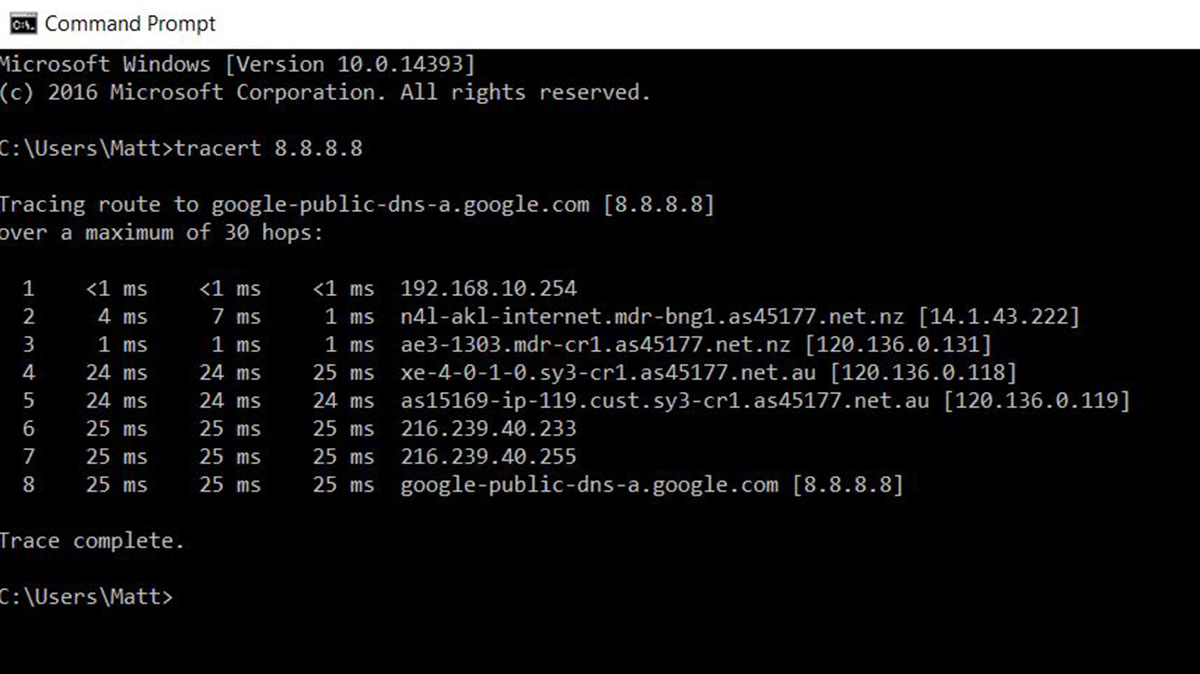Introduction
Understanding the Importance of IP Addresses
Have you ever wondered how computers and other devices communicate with each other over the internet? The answer lies in IP addresses, a vital component of internet connectivity. Whether you’re sending an email, browsing the web, or streaming your favorite show, IP addresses play a critical role in enabling communication and ensuring the delivery of data packets. In this article, we will explore the purpose of IP addresses, the different types available, and their significance in various aspects of internet usage.
An IP address, short for Internet Protocol address, is a unique numerical identifier assigned to every device connected to a network. It serves as a digital address, allowing devices to locate and communicate with each other within the vast interconnected web of the internet. Without IP addresses, the seamless transmission of data would be impossible, making the internet the interconnected marvel that it is today.
There are two main types of IP addresses: IPv4 and IPv6. IPv4, the older version, consists of four sets of numbers separated by periods (e.g., 192.168.0.1). IPv6, the newer version, employs a more extensive addressing system using eight sets of alphanumeric characters (e.g., 2001:0db8:85a3:0000:0000:8a2e:0370:7334). The transition to IPv6 is necessary due to the limited supply of IPv4 addresses.
The structure of an IP address is essential for understanding how it functions. Each IP address consists of two main parts: the network identifier and the host identifier. The network identifier identifies the network to which the device belongs, while the host identifier denotes the specific device within that network. Understanding this structure enables efficient routing of data packets and facilitates better network management.
The purpose of an IP address extends beyond facilitating internet communication. IP addresses also play a vital role in network security and geolocation. Additionally, individuals may have various reasons for changing or hiding their IP addresses, such as privacy concerns or bypassing geo-restrictions.
In the following sections, we will delve deeper into the specific purposes and functionalities of IP addresses in relation to internet communication, network security, geolocation, and the methods available for changing or hiding them. By gaining a comprehensive understanding of IP addresses and their significance, we can better navigate and harness the power of the internet in our daily lives.
What is an IP Address?
An IP address, or Internet Protocol address, is a unique numerical identifier assigned to every device connected to a network. It serves as a digital address, allowing devices to locate and communicate with each other within the vast interconnected web of the internet. Think of an IP address as the equivalent of a physical address for your device in the online world.
Just like how your home has a unique address that distinguishes it from other buildings, your device, whether it’s a computer, smartphone, tablet, or any other internet-enabled device, has an IP address that distinguishes it from other devices on the internet. This enables seamless communication and data transmission between devices.
IP addresses are composed of a series of numbers or alphanumeric characters. The most common type of IP address is known as IPv4, which uses a 32-bit addressing scheme and is represented by four sets of numbers separated by periods (e.g., 192.168.0.1). However, with the increasing number of devices connecting to the internet, IPv6 was introduced. IPv6 uses a 128-bit addressing scheme and is represented by eight sets of alphanumeric characters separated by colons (e.g., 2001:0db8:85a3:0000:0000:8a2e:0370:7334).
Every time you connect your device to the internet, your Internet Service Provider (ISP) assigns it a unique IP address. This IP address acts as an identifier for your device, allowing other devices and servers to route data packets to and from your device accurately.
IP addresses are critical for various internet-related tasks. For example, when you send an email to someone, your email client uses the recipient’s IP address to route the message to the correct destination. Similarly, when you browse the web, type a website URL, or perform any online activity, your device uses IP addresses to communicate with the respective servers hosting the websites or services you are accessing.
Understanding what an IP address is and how it functions is fundamental to comprehend the inner workings of the internet. It lays the foundation for further exploration into the different types of IP addresses, their structures, and the purposes they serve in the realm of internet communication, network security, geolocation, and more.
Types of IP Addresses
IP addresses can be categorized into two main types: IPv4 and IPv6. Let’s take a closer look at each of these types and understand their significance.
IPv4: IPv4, or Internet Protocol version 4, is the traditional and most commonly used type of IP address. It consists of a 32-bit address format, which means it is represented by four sets of numbers separated by periods. Each set can range from 0 to 255. For example, 192.168.0.1 is a typical IPv4 address.
IPv4 addresses were initially designed to accommodate around 4.3 billion unique addresses, which seemed like a large number at the time. However, with the explosion of internet-connected devices, the demand for IP addresses grew exponentially, leading to the depletion of available IPv4 addresses.
IPv6: IPv6, or Internet Protocol version 6, was introduced to address the scarcity of IPv4 addresses. It employs a 128-bit address format, represented by eight sets of alphanumeric characters separated by colons. This significantly increases the number of available addresses to a staggering 3.4 x 10^38.
IPv6 addresses not only solve the problem of address exhaustion but also bring additional benefits. They support a more efficient routing system, include enhanced security features, and facilitate better connectivity for devices through features like automatic address configuration.
Although IPv4 addresses are still widely used, the transition to IPv6 is gradually taking place. Internet Service Providers and device manufacturers are deploying IPv6 infrastructure to ensure the continued growth of the internet and the availability of addresses for new devices.
Understanding the difference between IPv4 and IPv6 is essential for internet communication and the management of networks. Each type offers its own set of benefits and considerations, and as the internet continues to evolve, the use of IPv6 will become increasingly prevalent.
Now that we have explored the different types of IP addresses, we can delve further into the structure and purpose of IP addresses in the following sections. This will provide a comprehensive understanding of how IP addresses facilitate internet communication, contribute to network security, and even aid in geolocation.
The Structure of an IP Address
The structure of an IP address is an essential aspect of understanding how it functions and how devices communicate over the internet. Each IP address consists of two main parts: the network identifier and the host identifier.
Network Identifier: The network identifier, also known as the network address, refers to the portion of the IP address that identifies the network to which the device belongs. It signifies the network’s unique identity and helps in routing data packets efficiently. Devices within the same network share the same network identifier.
Host Identifier: The host identifier, also known as the host address, represents the specific device within a network. It is the portion of the IP address that distinguishes one device from another within the same network. The host identifier is unique to each device and is necessary for directing data packets to the intended recipient within a network.
For example, consider the IP address 192.168.0.1. In this example, 192.168 is the network identifier, while the 0.1 is the host identifier. This IP address indicates that the device is part of the network identified by 192.168, and it is the first device within that network.
IP addresses can also contain subnet masks, which determine the size of the network and the number of devices within it. The subnet mask is used in conjunction with the network identifier to determine which part of the IP address represents the network and which part represents the host.
For instance, a subnet mask of 255.255.255.0 indicates that the first three sets of numbers in the IP address are the network identifier, and the last set of numbers is the host identifier. This allows for more efficient routing within the network and helps devices communicate seamlessly.
Understanding the structure of an IP address is vital for network administrators and technicians who manage and configure networks. It enables them to assign IP addresses to devices, create subnetworks, and troubleshoot network-related issues.
In the next sections, we will discuss the purpose of IP addresses in facilitating internet communication, ensuring network security, and providing geolocation information. This will give us a comprehensive overview of the significance of IP addresses in various aspects of our online experience.
The Purpose of an IP Address
The primary purpose of an IP address is to enable communication between devices over the internet. It serves as a unique identifier for each device, allowing data packets to be routed accurately from the source to the destination. However, the role of IP addresses extends beyond facilitating internet communication. Let’s explore some of the key purposes of IP addresses:
1. Internet Communication: IP addresses are crucial for communication between devices over the internet. Whenever you send an email, browse a website, or stream a video, your device uses IP addresses to establish connections and exchange data with servers hosting those services. IP addresses ensure that data packets are delivered to the intended recipient by identifying the source and destination devices.
2. Network Security: IP addresses play a vital role in network security. They are used in various security mechanisms, such as firewalls and access control lists, to regulate network traffic and protect against unauthorized access. By monitoring and filtering traffic based on IP addresses, network administrators can ensure the security and integrity of their networks.
3. Geolocation Information: IP addresses also provide geolocation information. By analyzing the IP address associated with a device, it is possible to determine the approximate physical location of that device. Geolocation data derived from IP addresses is used for various purposes, including targeted advertising, content delivery optimization, and fraud prevention.
4. Network Management: IP addresses are essential for network management tasks such as IP address allocation, network troubleshooting, and identifying network devices. Network administrators rely on IP addresses to assign unique identifiers to devices, track network traffic, and diagnose connectivity issues within a network.
5. Quality of Service (QoS): IP addresses are used to implement Quality of Service (QoS) mechanisms, which prioritize network traffic based on the type of service or application. By assigning different IP address ranges to different types of traffic, such as voice or video data, network administrators can allocate resources accordingly, ensuring smoother and more efficient communication.
Overall, IP addresses serve as the backbone of internet connectivity. They enable devices to communicate, ensure network security, provide geolocation information, facilitate network management, and support various other functions that contribute to the smooth operation of the internet.
In the upcoming sections, we will dive deeper into the role of IP addresses in internet communication, network security, geolocation, and methods for changing or hiding IP addresses. This comprehensive understanding will equip us with the knowledge to make the most of IP addresses in our online activities.
IP Address and Internet Communication
The relationship between IP addresses and internet communication is at the core of how devices connect and exchange data over the internet. IP addresses play a critical role in establishing connections, routing data packets, and ensuring seamless communication between devices. Let’s explore the significance of IP addresses in internet communication:
Connecting Devices: When you send an email, browse a website, or engage in any online activity, your device relies on IP addresses to establish connections with remote servers or other devices. Your device uses its IP address and the IP address of the destination device to initiate the connection. IP addresses act as the digital addresses that enable devices to locate and communicate with each other in the vast network of the internet.
Routing Data Packets: Data packets containing information such as web pages, audio/video streams, and emails are divided into small, manageable units. These packets travel across networks and are delivered to their intended recipients. IP addresses play a crucial role in this process by indicating the source and destination devices for each packet. Routers and other networking devices use IP addresses to accurately route the packets along the most efficient path to reach their destination.
Transmitting Internet Protocol: The IP in IP address stands for Internet Protocol, which is a set of rules and standards that govern how data is transmitted across the internet. IP addresses serve as the cornerstone of this protocol, enabling devices to follow the established guidelines for transmitting and receiving data. Without IP addresses, the reliable and efficient communication over the internet that we experience today would not be possible.
NAT and Private IP Addresses: Network Address Translation (NAT) allows multiple devices on a private network to share an IP address when accessing the internet. This is made possible by using private IP addresses, which are unique within the local network but not globally unique. NAT translates the private IP addresses into a single public IP address, ensuring that data packets can be sent and received correctly. NAT helps conserve IPv4 addresses and enables more efficient utilization of IP addressing space.
Domain Name System (DNS): While IP addresses are fundamental for internet communication, humans find it easier to remember domain names, such as www.example.com, rather than IP addresses. The Domain Name System (DNS) acts as a directory that translates domain names into IP addresses. When you enter a domain name in your web browser, DNS servers are queried to retrieve the corresponding IP address, allowing your device to establish a connection with the correct destination.
Understanding the integral role of IP addresses in internet communication helps us appreciate the complexity and reliability of the interconnected web we rely on daily. In the following sections, we will explore how IP addresses contribute to network security, geolocation, and the methods available for changing or hiding IP addresses.
IP Address and Network Security
The relationship between IP addresses and network security is critical in protecting networks from unauthorized access, data breaches, and other security threats. IP addresses play a crucial role in various security mechanisms and protocols that safeguard network infrastructure and ensure data integrity. Let’s delve into the significance of IP addresses in network security:
Firewalls and Access Control: Firewalls serve as a first line of defense in network security. They examine network traffic, filtering it based on predefined rules to allow or block specific types of connections. IP addresses are commonly used in firewall rules to control access to specific IP ranges or block suspicious IP addresses. By leveraging IP addresses, network administrators can implement granular access control policies and mitigate potential security risks.
Intrusion Detection and Prevention: Intrusion Detection Systems (IDS) and Intrusion Prevention Systems (IPS) monitor network traffic for malicious activities and potential threats. IP addresses are a vital component in these systems, as they help identify patterns and signatures associated with known malicious IP addresses or suspicious network behavior. By analyzing IP addresses, IDS/IPS systems can detect and respond to unauthorized access attempts, malware, or other security incidents.
IP Spoofing Detection: IP spoofing is a technique used by attackers to disguise their true IP addresses and impersonate legitimate entities. To counter IP spoofing, network security measures often include IP address authentication and verification mechanisms. By validating the authenticity of IP addresses, network administrators can prevent malicious actors from exploiting vulnerabilities and gaining unauthorized access to the network.
Distributed Denial of Service (DDoS) Mitigation: During a DDoS attack, malicious actors flood a network or a server with an overwhelming amount of traffic, leading to service disruption. IP addresses are used in DDoS mitigation strategies to identify the sources of attack traffic. Network security measures employ IP address filtering and rate limiting techniques to block or mitigate the impact of DDoS attacks, ensuring the availability and performance of network resources.
Logging and Forensics: IP addresses are essential in network logging and forensic investigations. When assessing security incidents or investigating potential breaches, network administrators and forensic analysts rely on IP address records to track and trace malicious activities. IP addresses provide valuable information such as the source and destination of network traffic, aiding in identifying potential vulnerabilities or unauthorized access attempts.
Overall, IP addresses are an integral component of network security infrastructure. They enable network administrators to implement access control policies, detect suspicious activities, mitigate attacks, and conduct forensic investigations. By leveraging IP addresses effectively, organizations can bolster their network security defenses and protect sensitive data from threats and unauthorized access.
In the subsequent sections, we will explore the role of IP addresses in geolocation information and discuss the methods available for changing or hiding IP addresses.
IP Address and Geolocation
The relationship between IP addresses and geolocation plays a significant role in various areas, including targeted advertising, content delivery optimization, fraud prevention, and regulatory compliance. IP addresses provide valuable information that helps determine the approximate physical location of a device or user. Let’s explore the importance of IP addresses in geolocation:
Targeted Advertising: Advertisers leverage geolocation data derived from IP addresses to deliver advertisements tailored to specific regions or localities. By analyzing the IP address associated with a device, advertisers can serve relevant ads based on the user’s location, improving the effectiveness of advertising campaigns and optimizing ad spend.
Content Delivery Optimization: Content providers, such as streaming services or e-commerce platforms, use IP addresses to optimize the delivery of content to users. By considering the geolocation information of a user, content can be served from a server that is physically closer to the user’s location. This reduces latency, improves loading times, and enhances overall user experience.
Fraud Prevention: Geolocation data obtained from IP addresses is used to detect and prevent fraudulent activities. For example, financial institutions may analyze IP addresses to identify suspicious transactions originating from unfamiliar locations. By comparing the geolocation of the IP address with the user’s expected location, potential fraud can be flagged, and appropriate security measures can be implemented.
Regulatory Compliance: IP addresses play a role in ensuring regulatory compliance, particularly in instances where content distribution or access is subject to regional or legal restrictions. Geolocation data obtained from IP addresses helps enforce geographically-based licensing agreements, content access restrictions, and compliance with local regulations and laws.
Localized Content and Services: Geolocation information derived from IP addresses is instrumental in providing localized content, services, and search results. Websites and search engines may use geolocation data to tailor content and search results based on the user’s location. This provides users with relevant information specific to their geographic area, enhancing their online experience.
It is important to note that geolocation data derived from IP addresses is not always 100% accurate due to factors such as proxies, VPNs, and the use of dynamic IP addresses. However, it still provides valuable insights and serves as a foundation for a range of geolocation-based functionalities.
In the following sections, we will further discuss the methods available for changing or hiding IP addresses, allowing users to protect their privacy or bypass geo-restrictions while considering the impact on geolocation-based services.
Changing or Hiding an IP Address
There are various reasons why individuals might want to change or hide their IP addresses, ranging from privacy concerns to bypassing restrictions imposed by websites or services. Fortunately, there are methods available to achieve this. Let’s explore some of the common ways to change or hide an IP address:
1. Using a Virtual Private Network (VPN): A VPN is a popular method for changing and hiding an IP address. It encrypts internet traffic and routes it through a server located in a different geographic location. By connecting to a VPN, individuals can mask their true IP address and appear as if they are accessing the internet from the server’s location. VPNs are commonly used for enhancing online privacy, accessing geographically restricted content, and safeguarding against potential surveillance.
2. Proxy Servers: Proxy servers act as intermediaries between a device and the internet. When accessing the internet through a proxy server, the device’s IP address is replaced with the IP address of the proxy server. This allows individuals to change their IP addresses and hide their true identity. Proxy servers can be used for various purposes, including bypassing IP-based restrictions or accessing region-specific content.
3. Tor Network: The Tor network, also known as The Onion Router, is a decentralized network that anonymizes internet traffic by routing it through a series of volunteer-operated servers called nodes. Each node in the network removes a layer of encryption, making it difficult to trace the origin of the traffic. By using the Tor network, individuals can change their IP addresses and browse the internet with a greater level of anonymity.
4. Dynamic IP Address: Internet Service Providers (ISPs) often assign dynamic IP addresses to their customers. Unlike static IP addresses, which remain the same, dynamic IP addresses may change each time a device connects to the internet. Disconnecting and reconnecting to the internet could result in obtaining a new IP address, effectively changing the device’s IP. However, this method is subject to the ISP’s network configuration and policies.
5. Mobile Hotspots: Using a mobile hotspot to connect to the internet can provide a different IP address compared to a regular home network. This is because mobile data networks have a separate IP pool assigned to them. Switching to a mobile hotspot can be a convenient way to change your IP address and access the internet with a different identity.
While these methods provide ways to change or hide an IP address, it’s important to consider their implications and legalities. Some activities, such as bypassing restrictions or engaging in illegal activities, may violate terms of service, laws, or regulations. It’s crucial to use these methods responsibly and in compliance with applicable rules.
In summary, techniques such as using a VPN, proxy servers, the Tor network, dynamic IP addresses, or mobile hotspots offer individuals the ability to change or hide their IP addresses. These methods can provide privacy, bypass restrictions, access region-specific content, or enhance online security. However, it is important to consider the legal and ethical aspects of using these methods and their impact on online activities.
Conclusion
IP addresses play a vital role in internet connectivity, allowing devices to communicate and exchange data over networks. They serve as unique identifiers, enabling seamless internet communication and facilitating the successful delivery of data packets. Understanding the different types, structures, and purposes of IP addresses provides valuable insights into the inner workings of the internet.
IP addresses have a significant impact on various aspects of our online experience, including network security, geolocation, and targeted advertising. They help enforce access control policies, detect and prevent security threats, optimize content delivery, and provide valuable geolocation information for a range of services.
Additionally, individuals have the option to change or hide their IP addresses using methods such as Virtual Private Networks (VPNs), proxy servers, the Tor network, dynamic IP addresses, or mobile hotspots. These methods offer privacy, access to region-specific content, and enhanced online security, but should be used responsibly and in compliance with legal and ethical considerations.
As the internet continues to evolve, IP addresses will remain a fundamental component of internet communication and infrastructure. Their importance in facilitating seamless connectivity, ensuring network security, and powering geolocation-based services will continue to shape the way we interact and experience the digital world.
By gaining a comprehensive understanding of IP addresses and their significance, we can navigate the complexities of the internet with greater awareness and harness its full potential in our daily lives.

























